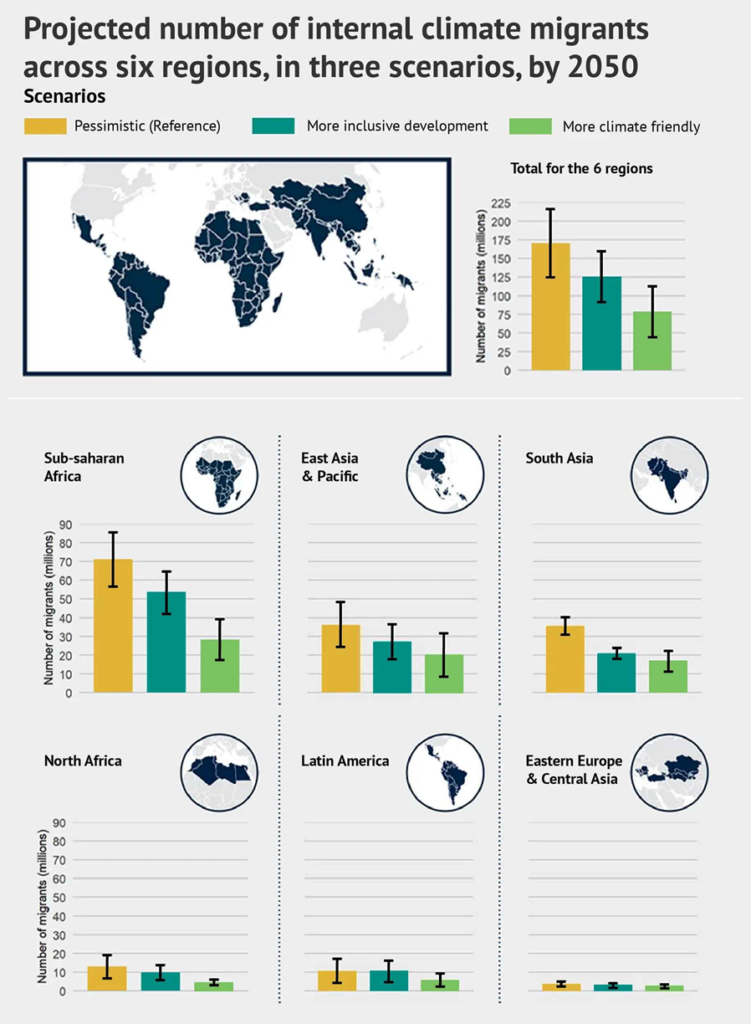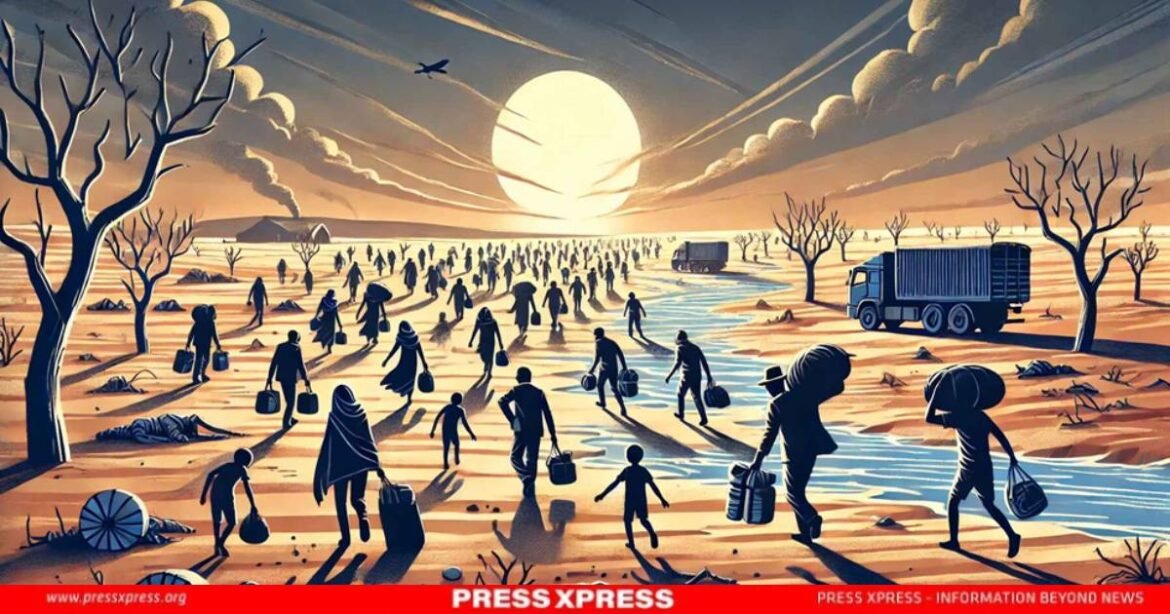Key takeaways:
- Climate change is already forcing millions to relocate, with projections of hundreds of millions displaced by 2050.
- Some regions face greater climate risks, making them potential hotspots for future migration.
- Effective responses require global cooperation, sustainable development, and support for vulnerable populations.
- Current actions to mitigate climate change and build community resilience will shape the future of climate migration.
Climate change is forcing people to leave their homes. This isn’t just about extreme weather – it’s also about slow changes like rising seas and worsening droughts. Most people move within their own countries (internal displacement), but the effects are felt worldwide.
You can also read: What the Baltic Sea Reveals About Global Warming?
Our relationship with climate has always shaped where we live. Long ago, during the Pleistocene era, early humans moved and adapted as the climate changed. When the climate stabilized in the Holocene, we settled down and built civilizations. Now, rapid climate change is upsetting this balance.
High-Risk Regions

Some parts of the world are feeling the heat more than others. The Indian Subcontinent, Persian Gulf, and Gulf of Mexico struggle with extreme temperatures {Figure 1}. Bangladesh, India, and other equatorial regions face the threat of frequent tropical cyclones {Figure 2}. Island nations like the Maldives might disappear as sea levels rise.

The Arctic is warming faster than anywhere else, melting ice and destroying habitats. In Africa, the Sahel region is turning into a desert, pushing people out. Coastal cities around the world, from Miami to Jakarta, are dealing with more floods and stronger storms. Without action, many of these places could become unlivable.
Climate-Driven Migration Today

People are already on the move because of climate change. In Africa, communities around Lake Chad have been relocating for decades as the lake shrinks. Pakistan saw millions displaced by floods in 2022. Wildfires in North America have forced many to evacuate their homes. Overall, worldwide, 32.6 million people were displaced due to disasters in 2022 alone {Figure 3}.
Most climate migration happens within countries. People often move temporarily to escape immediate dangers like hurricanes or floods. But slower changes are also pushing people to move permanently. Rising seas threaten island communities, while long-term droughts make farming impossible in some areas.
Gender Matters
Climate change affects everyone, but not equally. Women often face bigger risks and more obstacles when they need to move. In many cultures, men migrate first to find work, leaving women behind in dangerous areas.
Women might lack the resources to relocate and often have to care for children and older family members, making it harder to leave. When displaced, women face higher risks of violence and exploitation. These gender differences need to be considered in any plans to address climate migration.
Looking Ahead

According to The Groundswell report {Figure 4}, experts predict that hundreds of millions of people might have to move because of climate change by 2050. Sub-Saharan Africa could see the most internal climate migrants due to its vulnerability and young population. Rising seas will force many coastal communities to relocate.
Some areas will become “hotspots” of climate migration, like the region around Lake Victoria in Africa. These places will need special attention to manage the flow of people effectively. Without action, climate change will make existing problems worse and force more people from their homes.
The Future Depends on Today’s Actions

As the climate crisis intensifies, unstable regions will face even greater challenges. Poor countries that rely on farming will see more people move as crops fail and water becomes scarce {Figure 5}, creating severe droughts. Cities will struggle to cope with extreme weather, prompting urban residents to relocate.
How we handle climate migration in the future depends on what we do now. We need good policies, international teamwork, and investment in making communities more resilient. Preparing for these changes will help protect vulnerable people and create a more stable future for everyone.
A Global Response is Needed
The world needs to work together to address climate migration. This means creating safe ways for people to move when they need to and supporting them with laws and humanitarian aid. We should also help communities adapt to climate change so people can stay in their homes if possible.
Reducing greenhouse gas emissions is crucial to tackle the root cause of the problem. Supporting sustainable development can lessen the impact of climate change. Countries need to share resources and knowledge to respond effectively to migration challenges.
Policies must focus on protecting the most vulnerable people. This includes building their ability to adapt and providing financial support. International cooperation is key to managing climate-driven migration fairly and effectively.
Conclusion
Climate change is reshaping how and where people live around the world. Millions are already being forced to move due to extreme weather and rising seas. To handle these changes, we need effective policies and global teamwork.
By investing in resilience, creating safe migration options, and supporting sustainable development, we can protect vulnerable communities and work towards a more stable future for all.


